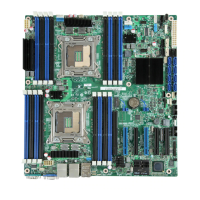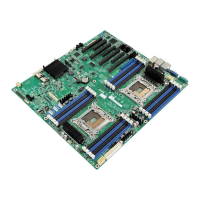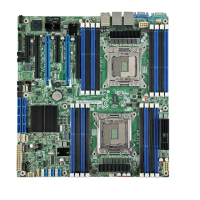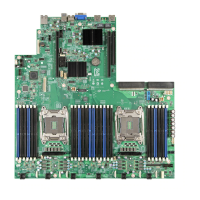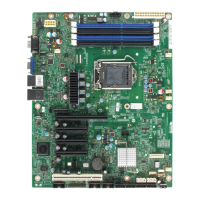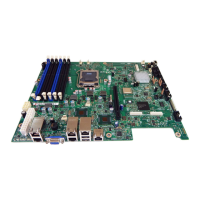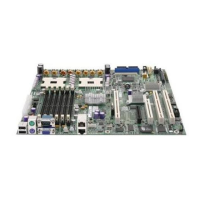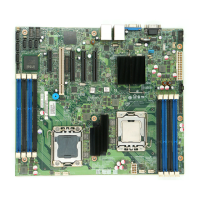Intel® Server Board S2600CW Platform Management Intel® Server Board S2600CW Family TPS
78 Revision 2.4
5.3.14.1 Hot-Swap Fans
Hot-swap fans are supported. These fans can be removed and replaced while the system is
powered on and operating. The BMC implements fan presence sensors for each
hot-swappable fan.
When a fan is not present, the associated fan speed sensor is put into the reading/unavailable
state, and any associated fan domains are put into the boost state. The fans may already be
boosted due to a previous fan failure or fan removal.
When a removed fan is inserted, the associated fan speed sensor is rearmed. If there are no
other critical conditions causing a fan boost condition, the fan speed returns to the nominal
state. Power cycling or resetting the system re-arms the fan speed sensors and clears fan
failure conditions. If the failure condition is still present, the boost state returns once the
sensor has re-initialized and the threshold violation is detected again.
5.3.14.2 Fan Redundancy Detection
The BMC supports redundant fan monitoring and implements a fan redundancy sensor. A fan
redundancy sensor generates events when its associated set of fans transitions between
redundant and non-redundant states, as determined by the number and health of the fans.
The definition of fan redundancy is configuration dependent. The BMC allows redundancy to
be configured on a per fan redundancy sensor basis through OEM SDR records.
A fan failure or removal of hot-swap fans up to the number of redundant fans specified in the
SDR in a fan configuration is a non-critical failure and is reflected in the front panel status. A
fan failure or removal that exceeds the number of redundant fans is a non-fatal,
insufficient-resources condition and is reflected in the front panel status as a non-fatal error.
Redundancy is checked only when the system is in the DC-on state. Fan redundancy changes
that occur when the system is DC-off or when AC is removed will not be logged until the
system is turned on.
5.3.14.3 Fan Domains
System fan speeds are controlled through pulse width modulation (PWM) signals, which are
driven separately for each domain by integrated PWM hardware. Fan speed is changed by
adjusting the duty cycle, which is the percentage of time the signal is driven high in each pulse.
The BMC controls the average duty cycle of each PWM signal through direct manipulation of
the integrated PWM control registers.
The same device may drive multiple PWM signals.
5.3.14.4 Nominal Fan Speed
A fan domain’s nominal fan speed can be configured as static (fixed value) or controlled by the
state of one or more associated temperature sensors.
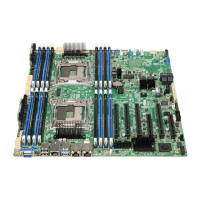
